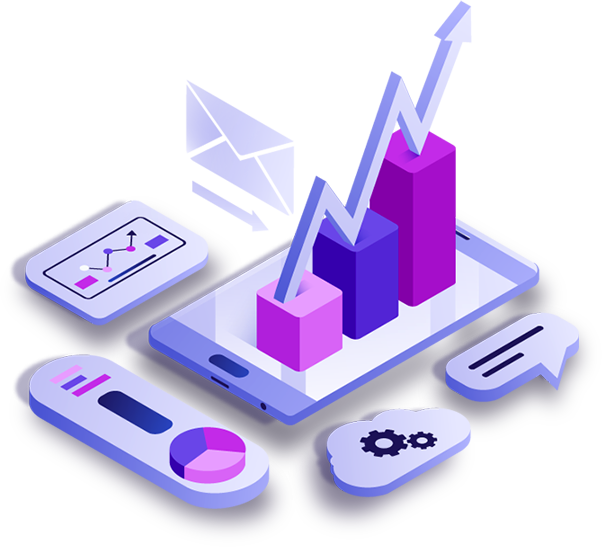AI Robotic Automation
AI-powered Robotic Process Automation (RPA) is a cutting-edge technological approach that combines the power of artificial intelligence (AI) and automation to streamline and optimize business processes. It involves the deployment of software robots or 'bots' that perform interactions within digital systems. These 'bots' harness AI capabilities, enabling them to understand, learn, adapt, and execute tasks autonomously, ultimately leading to increased efficiency, accuracy, and productivity across various workflows.
true empowering
AI-powered RPA complements human workers by enabling them to concentrate on activities that demand creativity and intellectual effort, like strategic decision-making, designing innovative strategies, and fostering customer relationships.
It revolutionizes the way tasks are executed by harnessing the combined power of AI and automation to optimize routine processes, minimize errors, and liberate human potential, empowering individuals and organizations to achieve more in less time, maximize productivity, and unlock new levels of innovation and value creation.
Cognition driven
AI-powered RPA goes beyond traditional automation by infusing cognitive abilities. These new breed bots can comprehend unstructured data, make decisions based on complex rules, and even learn from patterns and interactions to perform tasks more intelligently over time. They are capable of handling repetitive, rule-based, and data-intensive processes that were previously manual and time-consuming, freeing up human resources to focus on tasks that demand higher-level cognitive skills.
Optimize your efforts
The transformative potential of this technology lies in its ability to improve task execution and productivity. By taking over routine, repetitive, and mechanical tasks, such as data entry, report generation, or invoice processing, these bots enhance accuracy and speed, reducing the likelihood of errors and delays associated with human intervention, resulting in accelerated task completion, improved operational efficiency, and significant time and cost savings.


Empowering Your Results
AI Robotic Process Automation offers a wide range of applications across various industries and scenarios, enhancing workplace and improving efficiency. Here are some examples of how AI Robotic Process Automation could excel:
Finance and Accounting
AI-powered RPA can automate invoice processing by extracting data from invoices, validating it against the company's systems, and triggering payment workflows. It can also reconcile bank statements, flagging discrepancies for human review.
Customer Service
RPA can automate responses to frequently asked customer inquiries through chatbots, resolving common issues and directing complex queries to human agents. It can also collect and analyze customer feedback data to identify trends and improve service.
Healthcare
RPA can streamline the claims processing workflow by extracting patient information, verifying insurance coverage, and submitting claims to insurance providers. It can also assist in appointment scheduling and sending medication reminders to patients.
Human Resources
RPA can automate employee onboarding by generating contracts, sending welcome emails, and updating employee records across systems. It can also manage payroll processes by calculating salaries, deducting taxes, and generating reports.
Supply Chain Management
RPA can track inventory levels, automatically reorder stock when levels are low, and update inventory records in real-time. It can also monitor shipment status, provide delivery updates, and manage logistics.
Sales and Marketing
RPA can assist in lead generation by automatically capturing and categorizing leads from various sources. It can also personalize marketing campaigns by analyzing customer data and tailoring content accordingly.
IT Operations
RPA can handle routine IT tasks like software installations, system updates, and password resets. It can also monitor network performance, identify anomalies, and alert IT teams to potential issues.
Legal Services
RPA can assist in contract management by extracting key terms and clauses from contracts, ensuring compliance, and notifying stakeholders of upcoming renewals.
Manufacturing
RPA can automate quality control processes by analyzing sensor data from production lines, detecting defects, and initiating corrective actions. It can also manage equipment maintenance schedules.
Research and Data Analysis
RPA can gather data from various sources, clean and preprocess it, perform statistical analyses, and generate reports with visualizations, assisting researchers and analysts.
And much more!
These examples showcase how this innovative technology can optimize a wide range of tasks and processes, enhancing efficiency, accuracy, and productivity across diverse industries. By automating routine tasks, AI-powered RPA empowers human workers to focus on strategic decision-making, creative problem-solving, and other high-value activities.